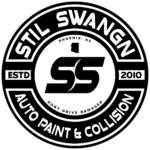Restorations and customization both have their place in the automotive world, but which is better for your classic car? Restoration is when you return a vehicle to its original appearance and condition by repairing the existing damages while customizing involves making changes to your exterior and interior (such as installing unique parts or modifying areas such as suspension).
The main difference between these two options is that restoration focuses on keeping your car as close to factory standards as possible. On the other hand, customization allows you to make alterations and improvements to your automobile.
Whether you choose to restore or customize your classic car or any vehicle, it is important to know what you are getting yourself into.
Why Choose Restoration?
There are a few things you should know when it comes to restoring your classic car to factory form. Some people may find more value in customizing their vehicle – even if that means using discontinued parts. However, restoration is the only way to ensure that you are obtaining the highest collector value for your classic vehicle. Here are just a few of the steps that come into play when you are restoring or repairing your classic car:
1. Research: The first step should always be researching. A good rule of thumb is the more you know about what needs to be done beforehand, the fewer headaches you will face on the project.
2. Tear Down: Teardown of all major components means taking apart your car piece by piece. This, at a minimum, should include engine, transmission, and suspension. This is often one of the most time-consuming parts of any restoration process.
3. Repair: All parts that need to be fixed or replaced will now be taken care of. Years of neglect can take some toll on your car and it will require a lot of fixing. Things like rust, body panel replacement, wiring repairs, etc.
4. Rebuild: Everything that was taken apart will now be rebuilt, hopefully, better than when it was running. This should include new seals everywhere, bearings if needed, new hubs or rotors depending on what part is being rebuilt, etc.
5. Paint: Painting is the last step before your car goes back together. Ensure you take all necessary steps to prepare for paint, including masking everything off and using a good rust converter to make sure the parts you are painting stay painted.
6. Reassembly: This can be done in whatever order you would like, but most times, it is best to put everything back together after painting so you can paint anything that was left out and not painted.
Why Customization Paths to Take?
If you think about it, customizing your classic car is similar to keeping your relative’s clothing after they pass away: you want to make sure that you treat it with respect and dignity and maintain its well-loved condition. To understand this better, let us imagine that we found a classic car in the garage of an elderly man who had passed away. His family was now passing down his belongings to his grandchildren, but what would you do with his car?
You couldn’t just let the grandkids wreck it, so restoration was not an option. The only other choice was to customize the car, which means that you can paint it or replace certain features without interfering too much with its original condition. If possible, adding custom parts that are no longer available on the market allows you to make the most out of your classic car.
1. Research: Make sure the part you want to add to your car will work and look right before you purchase anything. If all the parts do not match when it comes time for painting, nothing will line up. Trust me; I learned this lesson early in my career.
2. Purchase: You now have all the parts you need, but do not forget they will most likely need to be painted.
3. Assembly: All of these parts are new, and most likely, did not come assembled. I cannot tell you how many hours I spent screwing in bolts that made no sense or lining up screws that had no idea why they were in the direction they were going.
4. Painting: The painting process can be relatively easy, or it can be a complete nightmare if you do not take your time and ensure each part is painted correctly and that you do not mess up anywhere along the way.
Customizing: the sky’s the limit.
This is the question on most people’s minds when they first step into their restored dream car. Restoring a classic car can be an expensive and painstaking process, but many benefits come with it – which is why more and more people prefer restoring vintage cars v/s customizing them.
The restoration of your classic car can return it to its former glory after years of neglect and decay in a matter of months. It can restore all the features and aesthetics that made it so popular during its time and also bring back the feel and performance that comes with driving an original classic car.
Customizing: put your twist on it.
This would be the process of taking a car and making it unique somehow. It can be as simple as painting the car a very dark color to accent its curves, or it could involve swapping out a lot of components on your engine.
A customization is an option that most people go with when going through the restoration process since they have a lot of the parts lying around, and they want to put them to good use.
This is a big difference from restoration, where you want to get your classic car looking as close to new as possible while bringing out that shine that comes from quality paintwork. You know an old classic car restoration when you see one – it’s tough to beat the beauty of chrome, paint, and polished metal. All buffed up perfectly with no scratches insight.
We can’t say which is better as they both have advantages and disadvantages. Let’s cover some of those now:
Restoration: Pros & Cons
The biggest reason most people decide to restore their classic car is cost. It can be cheaper to buy that brand new paint job, new upholstery, and replace the carpet than it is to pay a professional to do it for you. Plus, if you’re not experienced with older cars and wood paneling, this can be beyond your abilities.
On the other hand, you’ll find that many classic car restoration shops are expensive. That’s why customizing comes into play because you can save money by doing your work or taking it to someone who only charges a fraction of the cost to do it for you.
Customizing: Pros & Cons
By customizing your classic car, it’s yours and yours alone. No one else has anything like it because you made changes that gave it that unique look that can’t be created by simply restoring it. This is good if you’re into having people turn heads because your model is the instantly recognizable one.
Customizing can be costlier than restoration because every time you have something changed, it also means you have to get rid of months or years of wear and tear that changes how it looks. You might find yourself spending more money in the long run just to keep up with that look you want.
One massive advantage to customizing your classic car is that if something breaks or wears out, you can do it yourself with the included instructions or find someone who only charges a fraction of what a restoration shop might charge.
Conclusion:
After going through all this information, we still think there isn’t a definite answer as to which finish is better. It’s all about what you want and how much money you’re willing to spend on it.
If it were us, we’d probably go with restoration so that everything matches perfectly and each part looks great because everything is brand new. We would choose to customize only if the purpose was for showing or having fun.



